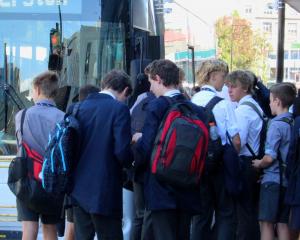
Such storylines can be difficult to change.
They have their own momentum and whatever happens becomes interpreted in the light of them.
A view expressed from the commentariat after the Roy Morgan poll was released this week was that Labour is on the skids.
The accumulation of mini-scandals, Cabinet ministers departing, the cost-of-living crisis and the lack of vision were prompting voters to seek other options. The honeymoon for Prime Minister Chris Hipkins is well over.
While the poll, which had Labour drop to an extraordinarily low 26%, is only one rough snapshot, it builds on a trend.
Labour was slipping (this time slumping), while minor parties were thriving.
This trend was mirrored in the Newshub Reid Research poll, announced on Wednesday evening, although less dire for Labour at 33.3%.
This puts Labour back to where it was before Christmas under Jacinda Ardern.
According to the results, National (36.6%) and Act New Zealand (12.1%) would be on track to govern alone.
On the left, the Greens were 9.6% and Te Pāti Māori 2.7%. New Zealand First, the wild card, was up to 4.1%.
Because the poll was after Kiri Allan’s car crash the damage for Labour could have been worse. Some commentators had described the crash as a tipping point for Labour as its woes mounted.
The Roy Morgan poll had National on 33.5%, Act 14%, the Greens 9%, Te Pāti Māori 6%, New Zealand First 5% and The Opportunities Party 4%.
The combined Labour and National tally are 59.5%, and 68.9% in the Newshub Reid poll. Voters are looking for other options.

Act’s resurrection is astounding. Mr Seymour plays the race "separatism" card with skill, attracting far more than a disgruntled extreme right.
Wily Winston Peters, himself rising from the dead, seems to be hoovering up some of the discontent as he plays to the anti-establishment crowd. He is a complication National’s Christopher Luxon could do without. Mr Seymour has said Act refuses to go into coalition with Mr Peters.
The Greens and Te Pāti Māori could be gaining from Labour’s timidity on changes other than its drive to centralise. Chris Hipkins’s "ordinary" person image, his likability and his competence pumped air into Labour tyres.
But his substance and actual purpose are now being questioned.
The proposal to take GST off fresh fruit and vegetables smacks of desperation.
Commentators have identified the downhill momentum narrative for Labour now under way.
And Labour’s scope for fresh policy is limited because the books are deteriorating in the face of reduced tax take and increased spending on the likes of large public sector salary rises. It could not credibly pull out something like the interest-free student loans policy.
Nevertheless, as the cliche goes, a week is a long time in politics.
There are 10 to go before election day. A lot could happen.
Mr Hipkins has been in the world of politics almost all his adult life and could easily better and batter the still inexperienced Mr Luxon when campaigning.
Mr Luxon, for his part, continues to fail to resonate with voters or win widespread trust.
There is also scope for complacency if National supporters believe the political predictions.
Something like "Corngate", which threw off Helen Clark in 2002, could arise at the last minute.
A "Show me the Money" moment (John Key on Phil Goff in 2011) could make an impact. National or Act could be upset by a scandal.
The results of elections overseas have shown what voters tell pollsters and what they do in the privacy of a polling booth sometimes differs.
Although Labour is up against it in October’s election, its chances of retaining power are far from gone.
The present narrative should not be embedded or treated as self-fulfilling.












